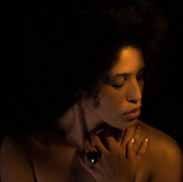Chronic Back Pain Flashcards, test questions and answers
Discover flashcards, test exam answers, and assignments to help you learn more about Chronic Back Pain and other subjects. Don’t miss the chance to use them for more effective college education. Use our database of questions and answers on Chronic Back Pain and get quick solutions for your test.
What is Chronic Back Pain?
Chronic back pain is a condition that affects millions of people around the world. It can have an immense effect on one’s quality of life, and in some cases, it can be incredibly debilitating. The causes for chronic back pain vary from person to person but can include long-term issues such as degenerative disc disease or spinal arthritis. Other causes may include injury, muscle spasms, and poor posture. The symptoms of chronic back pain are varied and often depend on the cause of the condition itself. Pain may range from a dull ache to sharp stabbing sensations that can be felt either all over the lower back or in localized areas such as the buttocks or hips. In addition to pain, patients may experience other symptoms including muscle spasms, stiffness, tingling sensations, weakness in the legs or hips, difficulty standing upright for long periods of time and even numbness in certain areas. While there is no single cure for chronic back pain relief typically involves a combination of treatments such as physical therapy exercises and stretches; medications; heat/cold therapies; lifestyle changes; psychological counseling; acupuncture; massage therapy; chiropractic care and more recently stem cell therapies have been used with promising results. In addition to these treatments there are also several self-care strategies that patients can use at home such as getting adequate rest and sleep while avoiding activities that could exacerbate existing pain like bending lifting heavy objects or sitting too long without proper support from a chair or cushion. Overall managing chronic back pain requires a multi-faceted approach so it’s important for people suffering from this condition to speak with their doctor about which treatment plan is best suited for their needs. With appropriate treatment plans most individuals will find some form of relief from their suffering allowing them to live life more comfortably with less disruption caused by this often debilitating condition.













